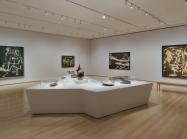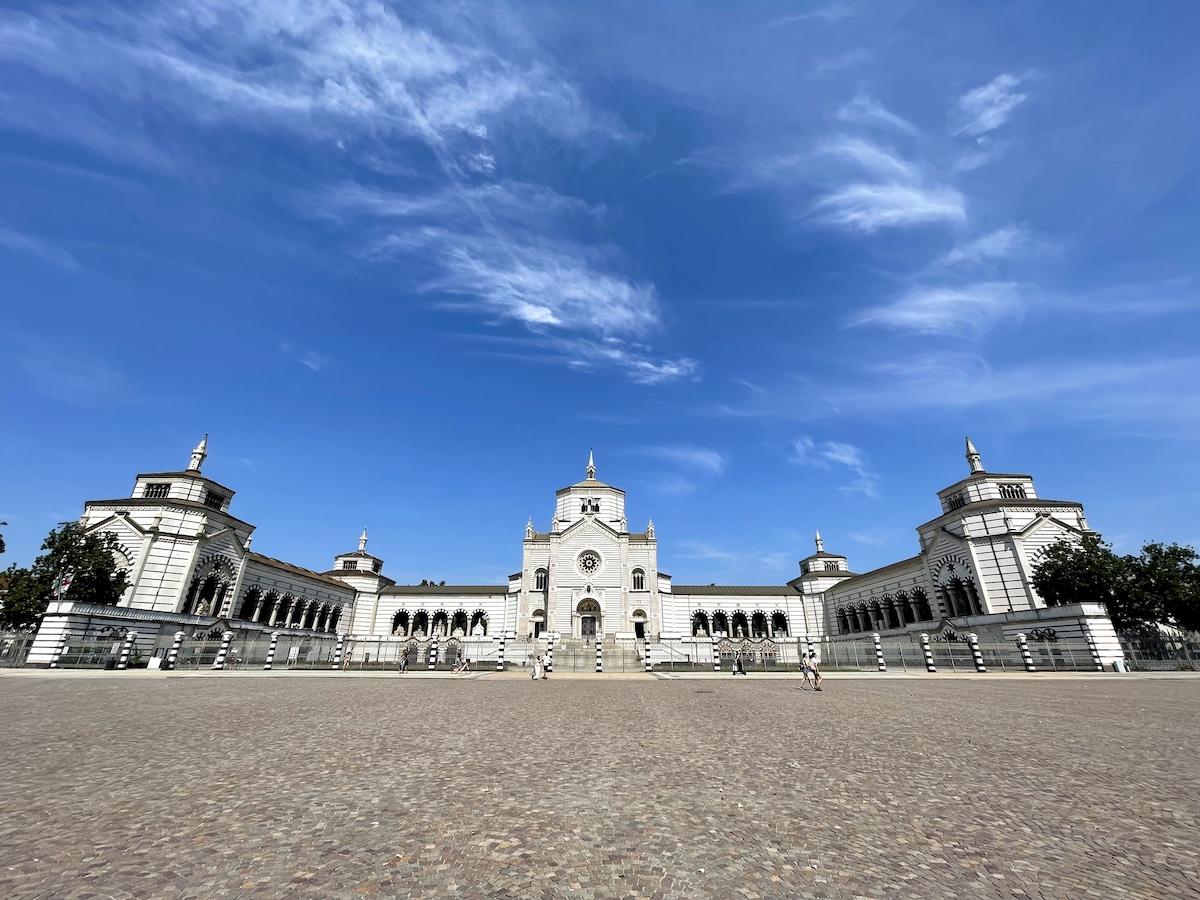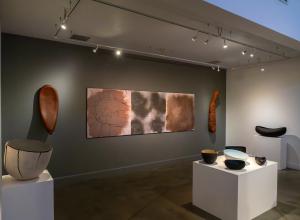After many delays and changes, in 1863 construction commenced on plans by Carlo Maciacchini (1818-1899), a talented architect who had won the design contract offered by the city. Maciacchini’s original structure was continuously expanded until the cemetery filled 250,000 square meters of space, including not only the graves but trees, pathways, and the main building at the cemetery’s entrance, the Famedio. Also known as “The Temple of Fame,” the Famedio welcomes visitors with its impressive grandeur, equipped with pinnacles and an elaborate rosette at the center. Constructed in a neomedieval style of horizontally striped dark red and white stone, the building extends to both the right and left with two galleries of connected arches, through which statue-crowned sarcophagi and tombs overlook the square in front. The Famedio’s three main doors, each overlooked by lunettes filled with golden mosaics, lead into a tall, light-filled room topped by a dome decorated with vivid blue paint and golden stars which watch over the plates of those remembered or buried here.
Not just anyone was allowed to be put to rest in the cemetery and the Famedio. Enshrined by an edict in 1884, only certain Milanese citizens (either by birth or adoption), who brought particular benefits to the city, who had special merits in the fields of art, science, or literature, or those who distinguished themselves in the history of Italy were granted the right to be buried in the Famedio. Thus, inside and in the crypt below, many famous individuals are buried or commemorated such as writer Alessandro Manzoni, poet Salvatore Quasimodo, composer Giuseppe Verdi, architect Gae Aulenti, and ballerina Carla Fracci.





























